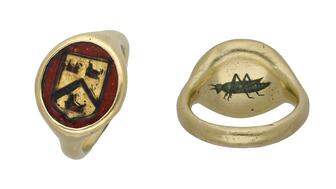On Data: Retailing in a Recession
Current jewelry sales trends portend tougher days ahead. Sherry Smith shares six things retailers can do to make sure they are ready.

Despite the National Retail Federation’s decision to stick with their original projection of 6-8 percent growth in retail sales for 2022, there remains a great deal of uncertainty in today’s economy.
If there is, in fact, growth, we know it will not apply equally across all retail sectors. This is all the more likely for the jewelry business, given the record-setting year in 2021.
The indicators of tougher days ahead can be seen in the numbers.
The last few months have seen a decline in units sold and, for the first time since the onset of the pandemic, a slight decline in gross sales despite the price increases that helped prop up gross sales in the earlier months of the year.
Nonetheless, there are concrete actions retailers can address to help navigate potentially choppy waters in the coming months.
Here are six areas we would suggest you should examine to maximize returns.
1. Expect more from your inventory.
Inventory is one of your biggest costs, and you might potentially see a slowdown in turn during a recession. However, it is precisely at times like these that you should measure your inventory turn and hold yourself to the highest possible standard.
Converting inventory into cash can be a real salvation in more challenging economic times, and there are two tenets that should not be compromised if you are to do so effectively.
The first is that you should never be out of stock on your best-selling products. They are the lifeblood of your business, even as some retailers become bored with products often not deemed to be “sexy enough.”
Sexy is a profitable business and a well-managed inventory.
The second area is to not be shy about aggressively moving out slow and/or discontinued products or brands. This is not the time to be tentative in liquidating slow-moving products or struggling to let go of buying mistakes of the past. There’s a reason it didn’t sell, so move it on.
A better stock turn creates positive cash flow, and no business was ever less well-off for being profitable.
2. Have a slush fund.
We strongly recommend retailers have a business savings or emergency account. You should have enough cash on hand to cover at least six months’ worth of operating costs, including payroll.
If you don’t have a slush fund, start one today by putting a percentage of every deposit into your business savings account. You’ll be surprised how quickly this can become an ingrained habit.
Although retailers will often say they can’t afford to do this, I would strongly argue that you can’t afford not to do this.
3. Always operate within your budget.
Retail owners understand more than most just how challenging it is to create an annual budget.
Nonetheless, it is a vital tool that should factor in historical sales, your marketing calendar, your fixed and variable costs, and gross margins.
Also, you will want to make sure you factor in anomalies such as a one-off large sale from the previous year, an inventory reduction sale that will not be repeated, business interruptions due to remodeling within your store, or external construction projects that might negatively impact your business.
Your annual budget goes hand in hand with a cash flow projection. You need to plan for the months that have a negative cash flow by utilizing a line of credit, and/or proactively and respectfully negotiate for longer payment terms from your vendors.
Following a budget can present opportunities to identify and cut costs.
4. Don’t stop advertising.
When sales decline, there is often a knee-jerk reaction to slash marketing spend.
However, this can be a great opportunity to build your brand awareness, and at a more favorable price, when your competitors are sitting on the sidelines waiting for the storm to pass.
Be sure to adjust your marketing efforts to meet current consumer habits. Today’s consumers shop across multiple channels, so you need to be more strategic with your targeted messages to stay top of mind.
Maintain regularly scheduled communications such as email, social media, texts, and more traditional vehicles such as billboards (if they work in your market) and a structured system of phone outreach.
Most importantly, you must track your marketing results; don’t fall for the fallacy that marketing results cannot be measured.
You should measure the key performance indicators (KPIs) of your marketing, and you should only continue with the campaigns that are achieving the desired results.
If there are any flippant takeaways from a marketing perspective it is this: no marketing or lousy marketing efforts will deliver lousy results.
Loyal customers are the lifeline of a retailer’s business, but the relationships must be nurtured.
Customers aren’t always excited about shopping around. They would prefer to go to retailers they know, trust, and have a relationship with, especially in times of uncertainty.
Existing customers also purchase more often and typically spend more per transaction than new customers. However, you must have a clienteling strategy in place because sometimes, all customers need is a little nudge.
For those retailers who don’t have a loyalty or rewards program, there’s no better time to introduce one than during an economic downturn.
There are good systems available so make sure to talk to your peers, mentors, or business advisers for help.
6. Assess your workforce needs.
It is imperative that you have top talent in the right positions at all times, but never more so than when business is more challenging.
While cross-training can benefit many businesses, it doesn’t always serve the retail store or your customers well.
For example, having administrative/support staff help on the floor with customer overflow is an OK stop-gap measure, but isn’t necessarily in the best interest of your business. Those interactions typically result in a close rate that is below reasonable expectations and an average ticket that will hurt your business.
When foot traffic is down, you must put your customers in front of your strongest salespeople to ensure the customers’ needs and wants are met in a meaningful way that is good for your customers and good for your business.
Ultimately, there is no higher goal in running a retail store.
The Latest

The heist happened in Lebec, California, in 2022 when a Brinks truck was transporting goods from one show in California to another.

The 10-carat fancy purple-pink diamond with potential links to Marie Antoinette headlined the white-glove jewelry auction this week.

The Starboard Cruises SVP discusses who is shopping for jewelry on ships, how much they’re spending, and why brands should get on board.

The Seymour & Evelyn Holtzman Bench Scholarship from Jewelers of America returns for a second year.

The historic signet ring exceeded its estimate at Noonans Mayfair’s jewelry auction this week.


To mark the milestone, the brand is introducing new non-bridal fine jewelry designs for the first time in two decades.

The gemstone is the third most valuable ruby to come out of the Montepuez mine, Gemfields said.

The countdown is on for the JCK Las Vegas Show and JA is pulling out all the stops.

Founder and longtime CEO Ben Smithee will stay with the agency, transitioning into the role of founding partner and strategic advisor.

Associate Editor Natalie Francisco shares 20 of her favorite pieces from the jewelry collections that debuted at Couture.

The top lot was a colorless Graff diamond, followed by a Burmese ruby necklace by Marcus & Co.

Gizzi, who has been in the industry since 2001, is now Jewelers of America’s senior vice president of corporate affairs.

Luca de Meo, a 30-year veteran of the auto industry, will succeed longtime CEO François-Henri Pinault.

Following visits to Vegas and New York, Botswana’s minerals minister sat down with Michelle Graff to discuss the state of the diamond market.

The “Your Love Has the Perfect Ring” campaign showcases the strength of love and need for inclusivity and representation, the jeweler said.

The former De Beers executive is the jewelry house’s new director of high jewelry for the Americas.

The New York Liberty forward is the first athlete to represent the Brooklyn-based jewelry brand.

Take a bite out of the 14-karat yellow gold “Fruits of Love Pear” earrings featuring peridots, diamond stems, and tsavorite leaves.

The one-day virtual event will feature speakers from De Beers, GIA, and Gemworld International.

The California-based creative talks jewelry photography in the modern era and tackles FAQs about working with a pro for the first time.

Al Capone’s pocket watch also found a buyer, though it went for less than half of what it did at auction four years ago.

The foundation has also expanded its “Stronger Together” initiative with Jewelers for Children.

Assimon is the auction house’s new chief commercial officer.

The De Beers Group CEO discusses the company’s new “beacon” program, the likelihood diamonds will be exempt from tariffs, and “Origin.”

The Danish jewelry giant hosted its grand opening last weekend, complete with a Pandora pink roulette wheel.

Industry veteran Anoop Mehta is the new chairman and independent director of the IGI board.

The winners of the inaugural “Kering Generation Award x Jewelry” are student Lee Min Seo and China-based startup Ianyan.



























